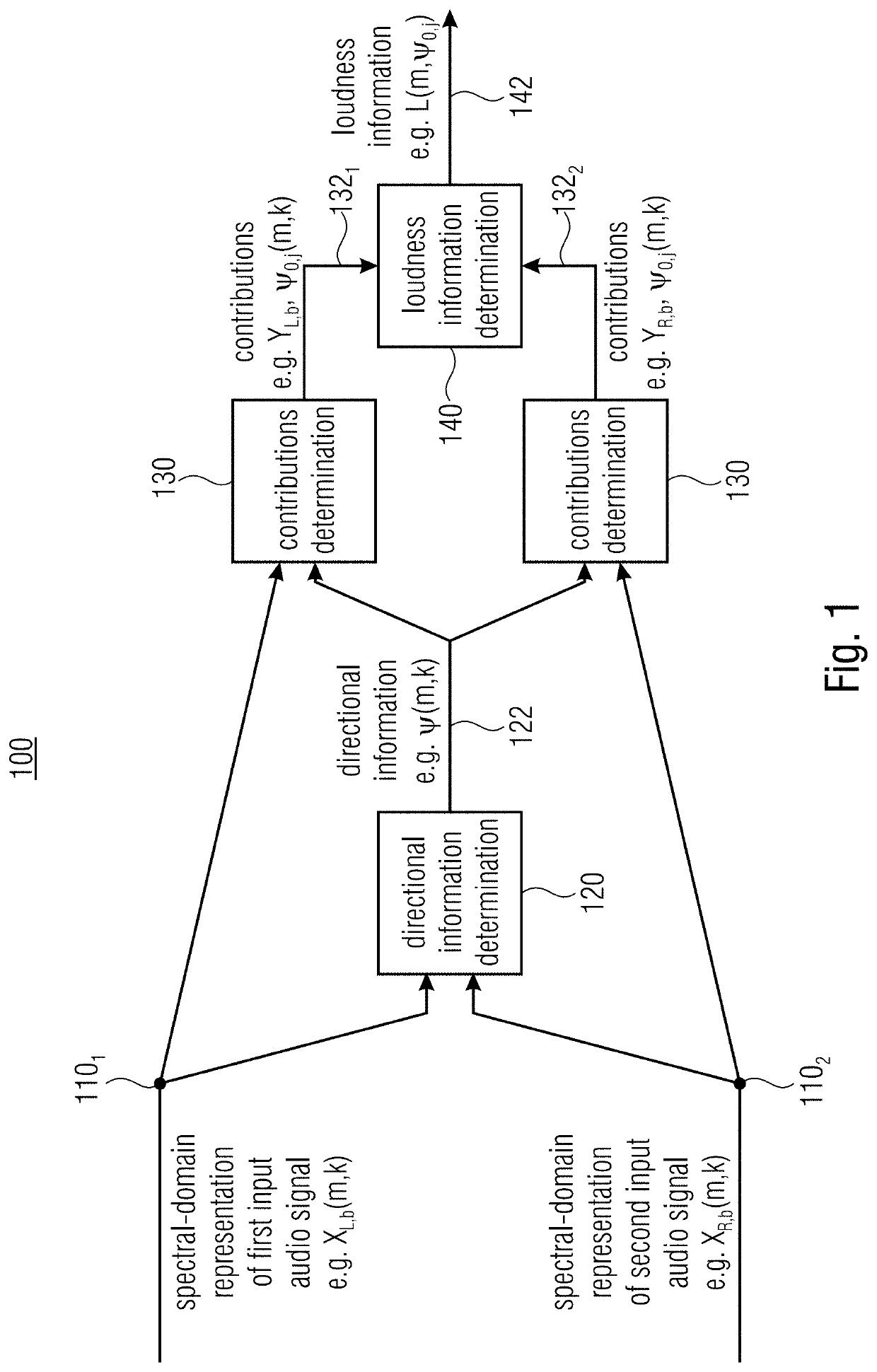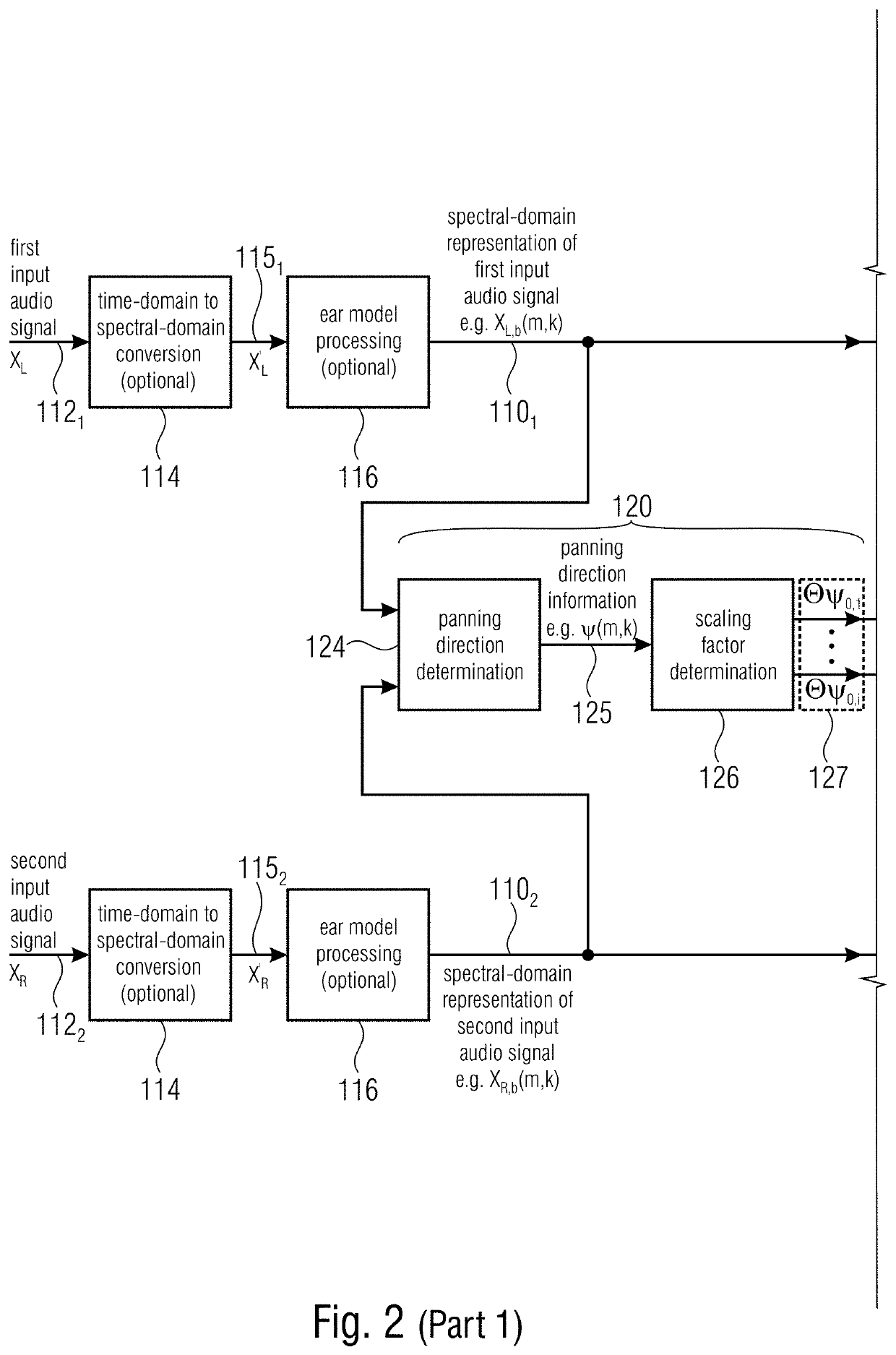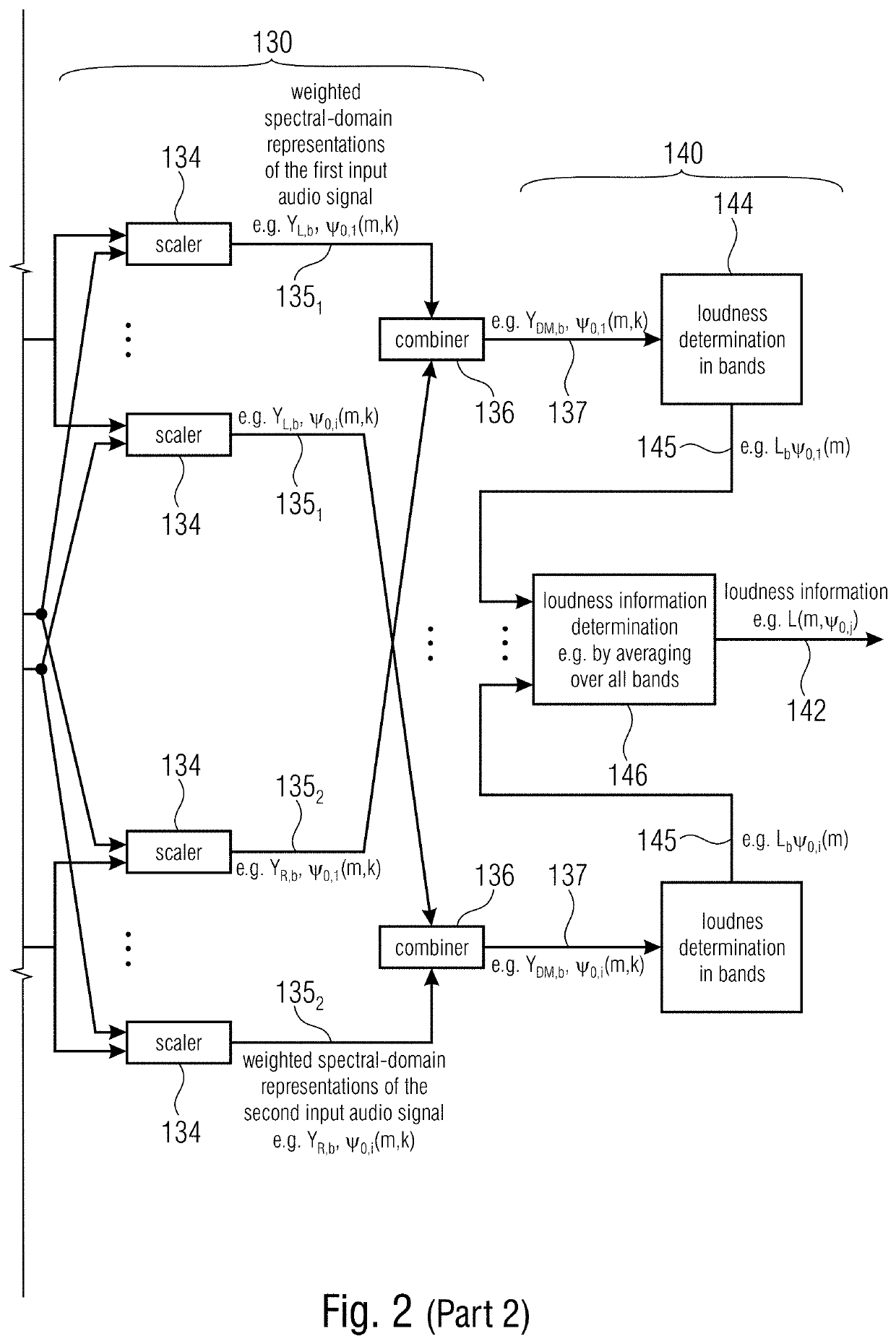Directional loudness map based audio processing
a loudness map and audio processing technology, applied in the field of directional loudness map based audio processing, can solve the problems of overestimating the quality loss of algorithms, affecting the performance of signals coded with spatial audio techniques, and affecting the accuracy of algorithms
- Summary
- Abstract
- Description
- Claims
- Application Information
AI Technical Summary
Benefits of technology
Problems solved by technology
Method used
Image
Examples
embodiments
Applications (Embodiments)
[0393]1. Automatic evaluation of quality (embodiment 1):[0394]As described in the chapter “objective assessment of spatial audio quality using directional loudness maps”[0395]2. Directional loudness-based bit distribution (embodiment 2) in the audio encoder, based on ratio (contribution) to the overall DirLoudMap of the individual signals DirLoudMaps.[0396]optional variation 1 (independent stereo pairs): audio signals as loudspeakers or objects.[0397]optional variation 2 (Downmix / Residual pairs): contribution of downmix signal DirLoudMap and residual DirLoudMap to the overall DirLoudMap. “Amount of contribution” in the auditory scene for bit distribution criteria.[0398]1. An audio encoder, performing joint coding of two or more channels, resulting, for example, in each one or more downmix and residual signals, in which the contribution of each residual signal to the overall directional loudness map is determined, e.g. from a fixed decoding rule (e.g. MS-Ste...
embodiment b
) masking of each channel / object—joint coding tools (e.g. M / S+prediction, MCT)
->target: controlling coder quantization noise in tool-processed signals (e.g. M or rotated “sum” signal) to meet target criterion in DirLoudMap domain
example for b
)
[0428]1) calculate the overall DirLoudMap from, for example, all signals[0429]2) apply joint coding tools[0430]3) determine contribution of tool-processed signals (e.g. “sum” and “residual”) to DirLoudMap, with consideration of the decoding function (e.g. panning by rotation / prediction)[0431]4) control quantization by[0432]a) considering influence of quantization noise to DirLoudMap[0433]b) considering impact of quantizing signal parts to zero to DirLoudMap
PUM
 Login to View More
Login to View More Abstract
Description
Claims
Application Information
 Login to View More
Login to View More - R&D
- Intellectual Property
- Life Sciences
- Materials
- Tech Scout
- Unparalleled Data Quality
- Higher Quality Content
- 60% Fewer Hallucinations
Browse by: Latest US Patents, China's latest patents, Technical Efficacy Thesaurus, Application Domain, Technology Topic, Popular Technical Reports.
© 2025 PatSnap. All rights reserved.Legal|Privacy policy|Modern Slavery Act Transparency Statement|Sitemap|About US| Contact US: help@patsnap.com



